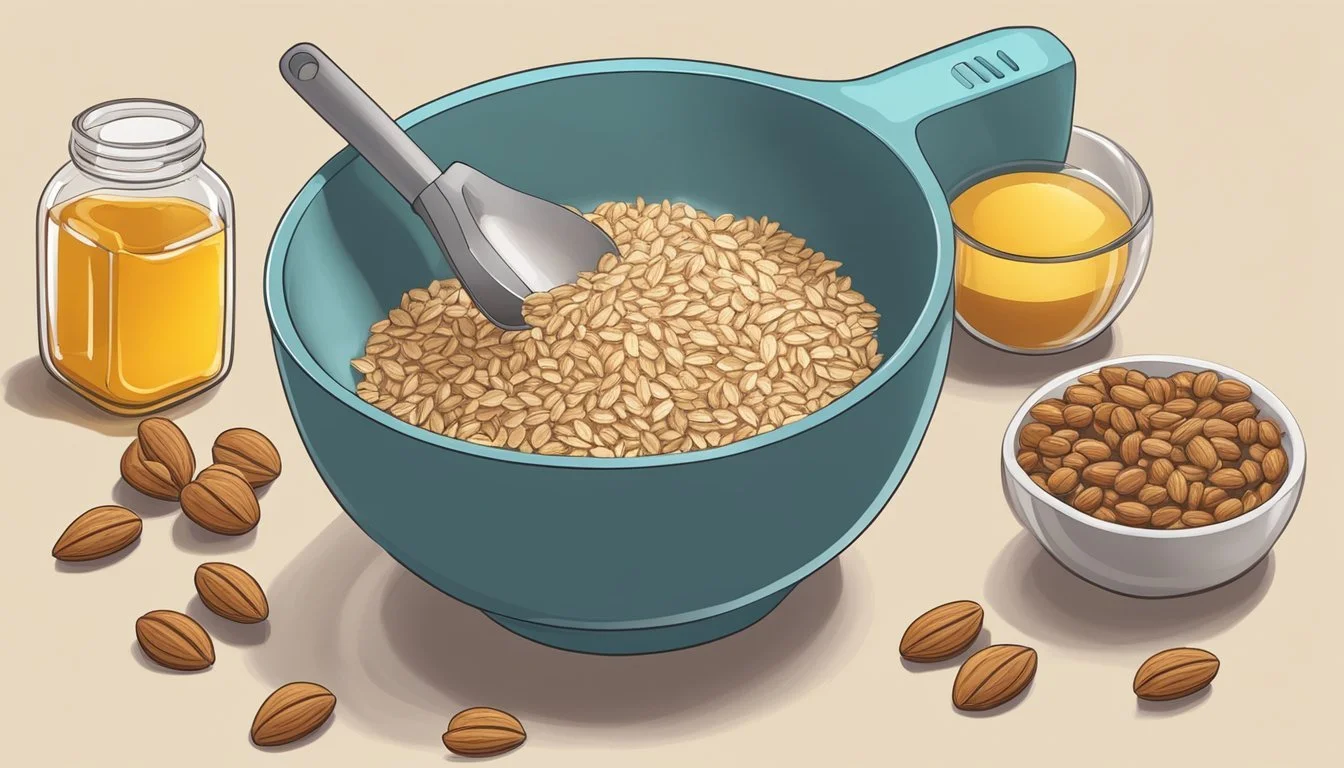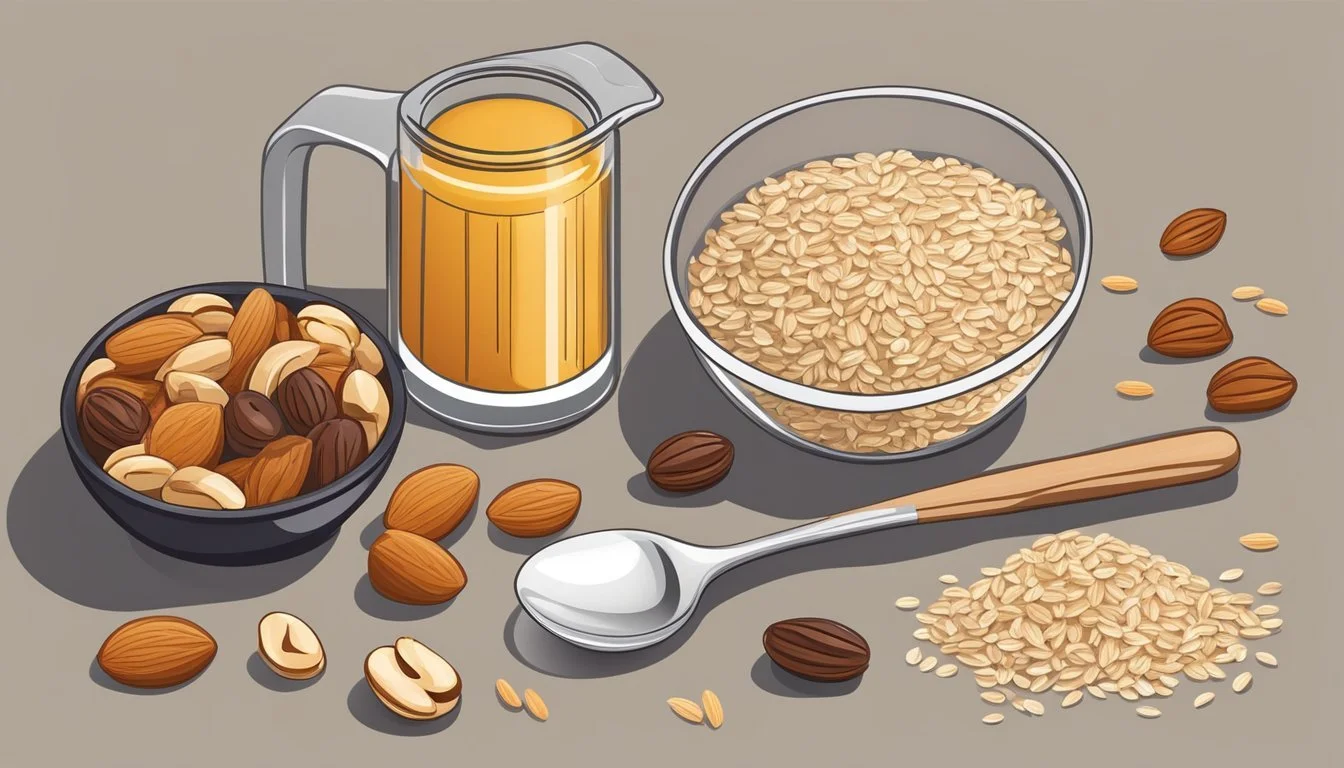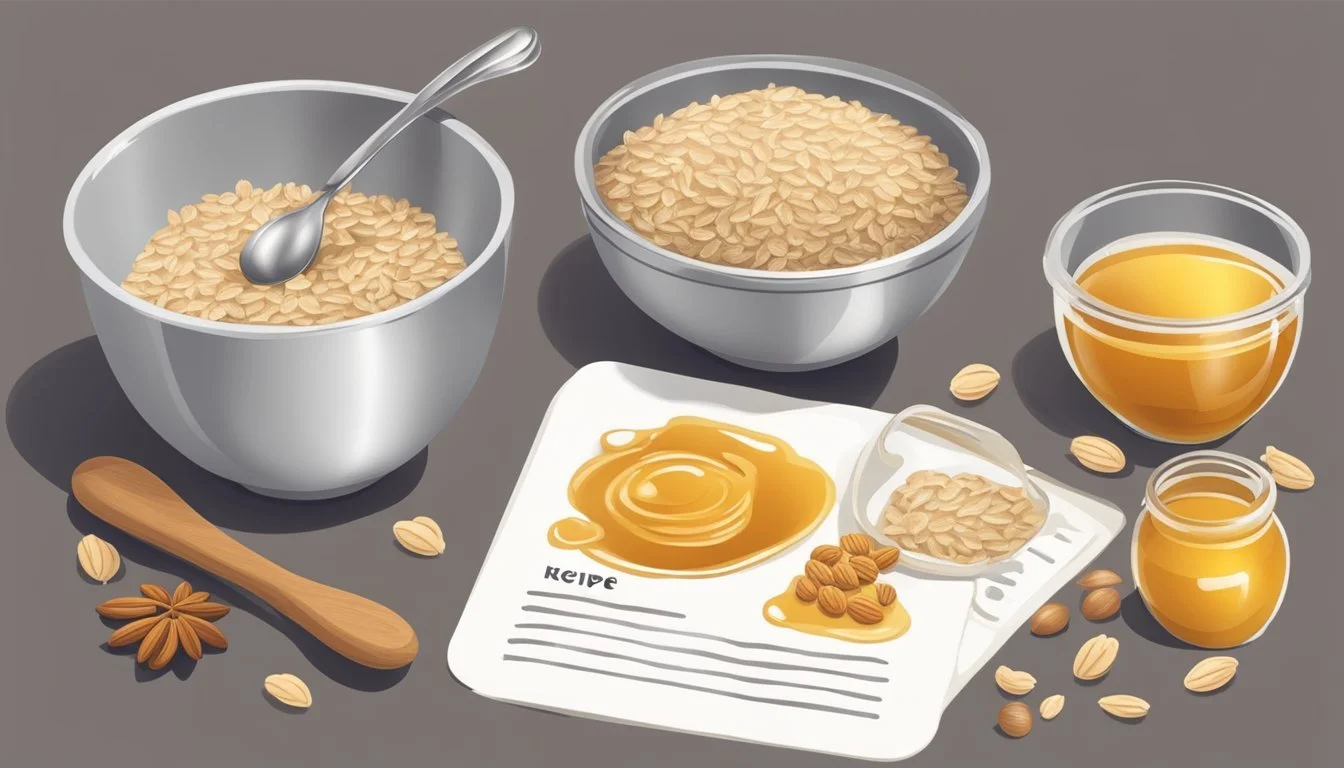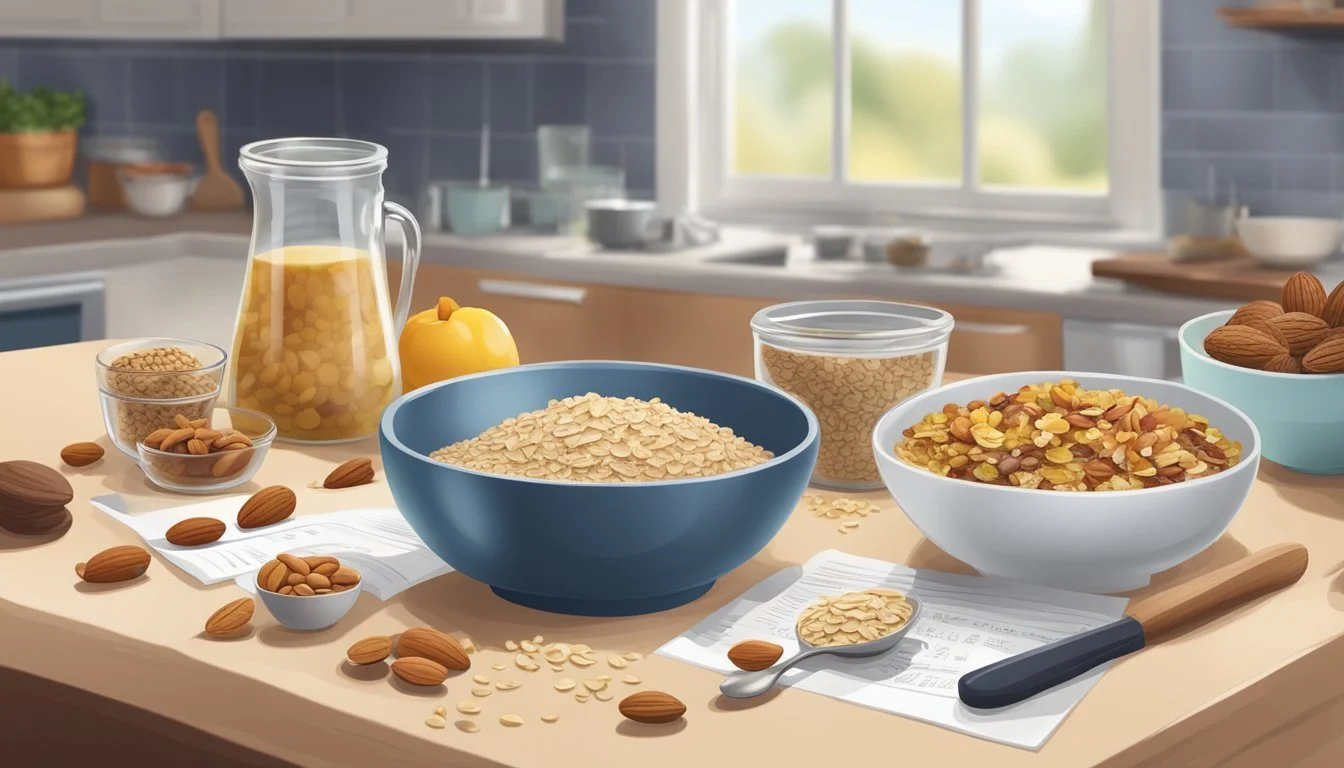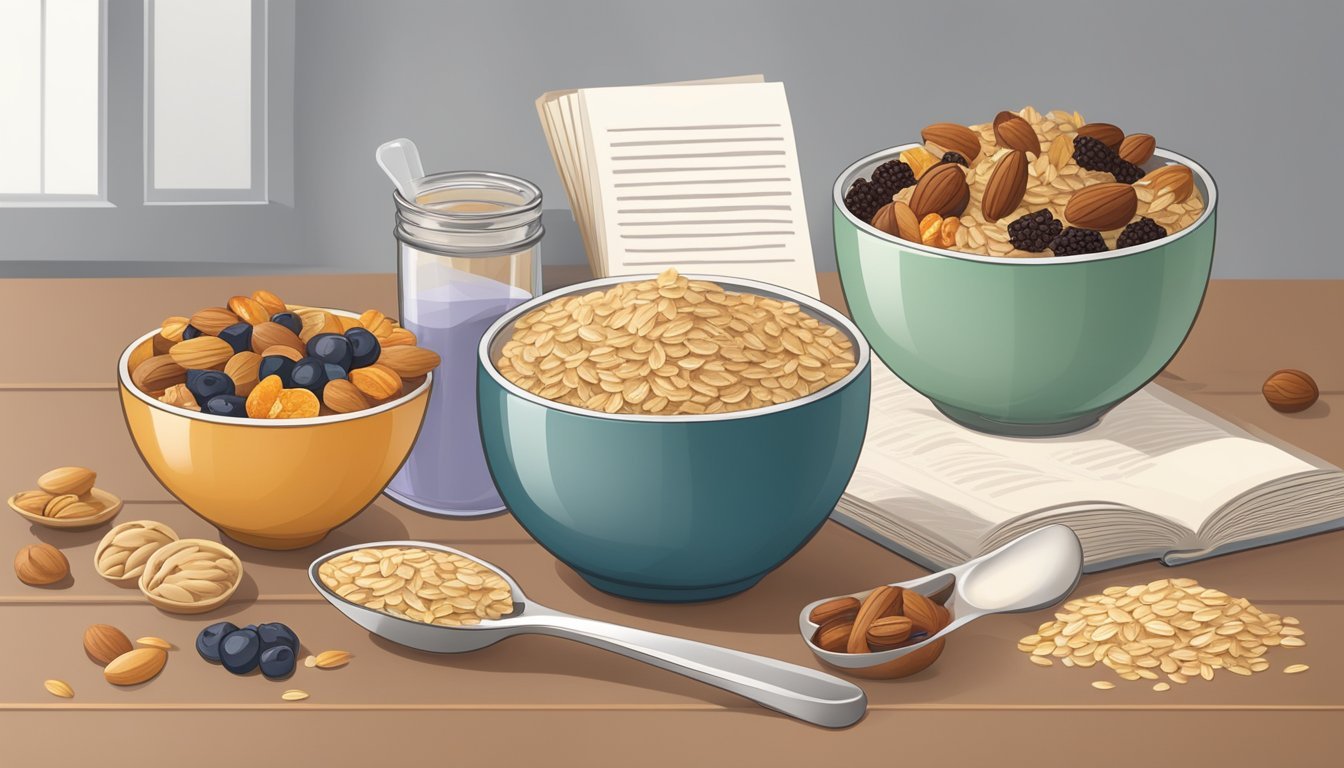How to Measure Ingredients Precisely for Your Homemade Granola Recipe
Measuring ingredients precisely is a critical step in the creation of homemade granola, ensuring a perfect balance between nutrition and taste. A standardized approach to ingredient measurement is beneficial not only for taste consistency but also for maintaining the healthiness of the granola. When embarking on a granola recipe, it's important to understand the role of each component; oats provide a hearty base, nuts (What wine goes well with nuts?) add crunch and protein, while sweeteners contribute to the granola's flavor and clump-forming characteristics.
For the best results, the use of measuring tools such as cups, spoons, and scales is recommended. A kitchen scale can offer the most accuracy, especially for dry ingredients like oats and nuts, ensuring that the granola has the right texture and doesn't become too dense or too loose. Liquid ingredients like oils and sweeteners should be measured in measuring cups designed for liquids to account for their volume accurately. A careful and precise approach to measuring ensures that the granola retains its intended nutritional value without sacrificing flavor.
The process respects personal taste and dietary requirements while promoting consistent quality. Whether the granola is being tailored to high-energy needs, dietary restrictions, or simply personal preference, the precision in measurement underpins the reliability of the recipe. Crafting homemade granola with exact measurements not only results in a delicious snack but also affords the maker control over the ingredients, ultimately leading to a healthier lifestyle.
Choosing Your Ingredients
Creating a perfect batch of homemade granola hinges on the selection of high-quality ingredients that not only yield a delicious flavor but also meet your nutritional preferences.
Selecting Oats
Oats are the foundation of any granola recipe. Old-fashioned rolled oats are typically used for their ideal texture and toasting capabilities. Avoid instant oats as they do not provide the same crunch or nutritional value.
Picking Nuts and Seeds
Nuts add richness and a satisfying crunch to granola. Choose raw, unsalted nuts such as almonds, walnuts, or pecans. For seeds, pumpkin and sunflower seeds are popular for their health benefits. Other options can include flax seeds and sesame seeds.
Identifying Sweeteners
Sweeteners not only lend sweetness but also help in clumping of the granola. Honey and maple syrup are common natural sweeteners, but you can also use agave nectar or brown sugar. Opt for a sweetener that complements your dietary requirements.
Adding Dried Fruits and Other Mix-ins
Dried fruits (What wine goes well with dried fruits?) like raisins, cranberries, and apricots can be mixed in after baking to add chewiness and sweetness. Consider additional mix-ins like chocolate chips or coconut flakes for extra flavor and texture.
Determining Oils and Fats
Oils and fats contribute to the texture of granola and help with the toasting process. Use a light oil such as coconut or olive oil, or butter for a richer flavor. Ensure that whatever fat you select is suitable for baking at high temperatures.
Selecting Spices and Flavors
Spices like cinnamon, ginger, or pumpkin spice add warmth and complexity. A dash of salt enhances the overall flavor of the granola. Incorporate a small amount of vanilla extract for depth in sweetness and aroma.
Considering Nutritional Additions
For an added nutritional boost, consider incorporating protein-rich ingredients or additional seeds high in omega-3s. This can elevate the health profile of your homemade granola without compromising on taste.
Understanding Sweetener Substitutes
For those requiring lower glycemic index alternatives, sweetener substitutes like stevia or monk fruit extract can be used. You must adjust the quantity as these substitutes tend to be sweeter than sugar or honey.
Choosing Gluten-Free Options
To cater to gluten-free dietary needs, ensure that the oats are certified gluten-free and not contaminated during processing. Many are inherently gluten-free but check packaging to be certain, as cross-contamination can be an issue for those with sensitivities.
Preparation Methods
When making homemade granola, precise preparation methods are crucial for creating the ideal texture and flavor. Consistency in combining ingredients and regulating temperature ensures a crunchy and clumpy granola every time.
Combining Dry Ingredients
For the base of the granola, one should mix oats, nuts, and any chosen seeds in a large bowl. The right balance of sea salt and cinnamon or other spices should be evenly distributed among the dry mix-ins.
Mixing in Wet Ingredients
The wet ingredients—often a combination of melted coconut oil, maple syrup, and vanilla extract—must be thoroughly whisked together before being poured over the dry ingredients. This ensures a uniform coating for that desired golden crunch.
Preheating the Oven
Preheat the oven to the optimal temperature, commonly between 300°F and 350°F, to prepare it for baking. A precise oven temperature is vital for even baking and preventing burnt granola.
Lining the Baking Sheet
Use parchment paper to line a rimmed baking sheet. This is essential to prevent sticking and allows for easy removal and stirring of granola during the baking process.
Creating the Perfect Clusters
To form clusters, one should press the granola mixture down onto the baking sheet before placing it in the oven. The pressure helps the ingredients stick together during baking.
Adding Egg Whites for Clumpiness
For extra clumpy granola, beat an egg white until frothy and mix it into the granola before baking. The protein helps bind the ingredients, creating satisfying clusters.
Customizing the Granola Recipe
Granola is highly customizable. Add dried fruit, chocolate chips, or coconut flakes after baking to cater to individual preferences while maintaining the granola's integrity.
Baking to Ideal Crunchiness
Bake the granola until it turns a golden-brown color; this is the hallmark of perfect crunchy granola. Rotate the baking sheet occasionally to ensure even baking.
Using the Correct Baking Time and Temperature
Typical baking times range from 20 to 30 minutes, depending on oven temperature and desired crispness. Keep a close eye to prevent over-baking.
Cooling and Breaking Up Granola
After baking, let the granola cool completely on the baking sheet. This cooling period solidifies the clusters and enhances the granola's crunchy texture.
Storing the Granola Properly
Store the granola in an airtight container to maintain freshness. Keep it in a cool, dry place such as a pantry to preserve its crunchy clusters for weeks.
Serving Suggestions
Granola is a versatile food that can be enjoyed in various ways throughout the day. Whether one prefers it as a hearty breakfast or a light snack, there are several delightful means to relish this crunchy treat.
Granola as Breakfast
Starting the day with granola is a delightful choice. It's typically served over milk or mixed into yogurt to add a satisfying crunch. The granola can be portioned out according to the desired calorie intake, with a recommended serving being around half a cup.
Pour: 1/2 cup of granola into a bowl
Add: Milk or yogurt to desired level
Stir: Combine well for an even distribution
Granola as a Snack
As a snack, granola provides a quick boost of energy with convenience. It’s easy to make in advance and can be portioned into single servings in small bags or containers for on-the-go nourishment.
Pack: Single servings of granola in portable containers
Customize: Mix with nuts or dried fruits for variation
Pairing with Fruits and Dairy
Granola pairs exceptionally well with fruits and dairy products, enhancing flavors and nutritional value. Fresh fruit like berries or sliced bananas can be added to granola served with yogurt or milk, creating a balanced meal or snack.
Combine: Granola with a variety of chopped fruits
Layer: Alternating layers of granola, fruit, and yogurt for a parfait
Incorporating into Recipes
Granola's textural contrast complements many recipes, such as toppings for baked fruits or as a crunchy element in smoothies. This adds complexity and an enjoyable crunch to various dishes.
Sprinkle: Over apple crisp or baked pears before serving
Blend: A handful of granola into smoothies for texture
Storage and Shelf Life
When preparing homemade granola, understanding the proper storage techniques and the expected shelf life is crucial for maintaining its freshness and texture.
Choosing the Right Container
For storing granola, selecting an airtight container is critical. Glass jars with sealing lids are an excellent choice that maintain freshness and prevent moisture or pests from compromising the granola. Alternatively, one can opt for high-quality plastic containers that have airtight seals.
Proper Storage to Retain Freshness
To retain the granola’s crunchy texture and prevent it from becoming stale, the storage location should be cool and dry. A pantry shelf away from heat sources and sunlight is ideal. For those looking to extend the freshness of their granola, refrigeration is an option and it must be in an airtight container to discourage moisture.
Freezing granola is also a storage method that can significantly extend its shelf life. When opting to freeze granola, it’s important to ensure it's placed in a freezer-safe, airtight container or a tightly sealed bag to prevent freezer burn.
Assessing Granola Shelf Life
Homemade granola’s shelf life can vary based on its ingredients and storage conditions. Typically, it can last up to four weeks when stored at room temperature in an airtight container. To extend its shelf life, one can store the granola in the freezer where it can remain fresh for up to six months. The key to maximizing granola’s shelf life is ensuring it's completely cool before sealing it for storage.
Health Benefits and Nutrition
When preparing homemade granola, understanding the nutritional content and the health benefits associated with the ingredients is essential. This ensures the granola is not only enjoyable but also contributes positively to one's diet.
Nutritional Information of Granola
Homemade granola typically combines oats, nuts, seeds, sweeteners, and oils. The nutritional value of granola can vary greatly depending on the choices of these ingredients. A basic granola can offer the following per 1/2 cup serving:
Calories: Approximately 200-300
Proteins: 5-10 grams
Fats: 10-15 grams (with a mix of saturated and unsaturated fats)
Carbohydrates: 20-30 grams
Fiber: 3-5 grams
Sugars: Varies depending on the added sweeteners
It's vital to measure each ingredient accurately to keep track of the nutrition information. Rolled oats serve as the base for granola and are a significant source of complex carbohydrates and fiber.
Benefits of Whole Grains and Fiber
Rolled oats, a common ingredient in granola, are an excellent source of whole grains known to have several health benefits. They contribute to:
Digestive Health: The fiber present in oats aids in digestion and can help maintain a healthy gut.
Heart Health: Eating whole grains like oats may reduce the risk of heart disease.
Satiety: High-fiber foods like oats can make one feel full longer, which might help with weight management.
One should aim to include a variety of whole grains for a well-rounded nutritional profile.
Understand Sugars and Fats
When creating a healthy granola, consider the types of sweeteners and oils used. This impacts the overall caloric and sugar content:
Sweeteners: Natural sweeteners like honey or maple syrup are often preferred. They should be used in moderation due to their high sugar content.
Oils: Choosing oils like coconut oil can add healthful fats but should also be used judiciously to manage fat intake.
Homemade granola allows for control over the amount and quality of sugars and fats, making it a healthy and nutritional addition to one’s diet when consumed in appropriate portions.
Troubleshooting Common Issues
When making a homemade granola recipe, specific challenges can arise including burnt granola, texture inconsistencies, unbalanced flavors, and stickiness. Addressing each issue carefully ensures that the granola turns out perfectly crunchy and clumpy, with a balanced sweetness.
Preventing Burnt Granola
To avoid burnt granola, one should consistently monitor the oven temperature and baking time. Granola should be baked at a moderate temperature, typically around 325°F to 350°F. It's crucial to stir the granola periodically, especially towards the end of baking, to ensure even coloring and to prevent the edges from burning.
Oven Temperature: 325°F - 350°F
Stirring: Every 10-15 minutes
Achieving Desired Granola Texture
The perfect granola texture—crunchy with clusters—relies on the right balance of wet to dry ingredients. The sweetener, such as honey or maple syrup, helps to create clumpiness by binding the dry ingredients together. One can adjust the baking time to achieve crunchiness; baking for less time results in softer granola, whereas more time in the oven will yield a crunchier texture.
Ratio: Wet ingredients should coat the dry ingredients thoroughly but not drench them.
Baking Time: Less time for soft granola, more time for crunchy texture.
Balancing Flavors and Sweetness
The right combination of sweetener and salt is essential in a homemade granola recipe for flavor balance. One should add sweeteners judiciously and taste the mixture prior to baking. Using natural sweeteners like honey or maple syrup not only adds sweetness but also promotes clumping of the granola.
Sweeteners: Adjust to taste preference.
Salt: A pinch can enhance the overall flavor profile.
Solving Granola Stickiness
To counteract stickiness in granola, one must ensure that it's thoroughly baked and cooled down before storage. Stickiness often occurs from underbaking or storing granola while it is still warm, trapping moisture. It is important to spread granola in a thin, even layer on the baking sheet to allow for proper heat circulation and to stir occasionally during the baking process.
Cooling: Let granola cool completely before storing.
Storage: Use an airtight container to keep granola dry and crunchy.
Frequently Asked Questions
When measuring ingredients for homemade granola, one might have several questions regarding substitutions, dietary needs, and storage. Below are answers to some of the most frequently asked questions.
Can I Use Quick Oats Instead of Rolled Oats?
For homemade granola, rolled oats, also known as old-fashioned rolled oats, are preferred due to their thickness and texture. They hold up better during baking. Using quick oats can result in a softer final product, as they are thinner and absorb liquids more quickly.
Are There Vegan Options for Granola?
Yes, granola can easily be adapted for a vegan diet. Simply substitute honey with vegan sweeteners such as maple syrup or agave nectar. Ensure that all other ingredients, like oils and add-ins, are also vegan-friendly.
How Long Does Homemade Granola Last?
Proper storage is key to extending the shelf life of homemade granola. It should be kept in an airtight container in a cool, dry place. Typically, it can last up to two weeks, but can extend to a month if refrigerated.
What Are the Best Nuts to Use in Granola?
The best nuts for granola depend on personal preference, but almonds, pecans, and walnuts are commonly used for their crunchy texture and nutritional value. They should be chopped to ensure even baking and distributed texture.
Can Granola Be Made Without Nuts?
Absolutely, granola can be made nut-free by using a variety of seeds, such as pumpkin seeds or sunflower seeds, for a seed-only granola. This also lowers the risk for those with nut allergies while still providing a crunchy component.
Conclusion
Measuring ingredients with precision is essential when making homemade granola. To ensure consistency and the desired outcome, one should use the right tools—measuring cups and spoons for dry ingredients, and liquid measuring cups for wet ingredients. It is recommended to follow these guidelines:
Dry Ingredients: They must be measured in nesting measuring cups or spoons. Ingredients like oats, nuts, and seeds should be filled to the top and leveled off with a flat edge.
Liquid Ingredients: Syrups, oils, and liquid flavorings should be measured in clear cups designed for liquids, with readings at eye level to ensure accuracy.
For best results, one should consider the following:
Weighing Ingredients: Using a kitchen scale can yield more consistent results, especially for larger batches.
Room Temperature: Ingredients like honey and coconut oil should be at room temperature to measure accurately.
Packing Brown Sugar: If the recipe calls for packed brown sugar, one must press it firmly into the measuring cup until it holds its shape.
In summary, taking the time to measure ingredients correctly will contribute significantly to the success of one's homemade granola. Careful adherence to recipes and attentiveness to detail will culminate in a granola that is perfectly balanced in flavor and texture. It’s these small steps that make a noticeable difference in home baking.


